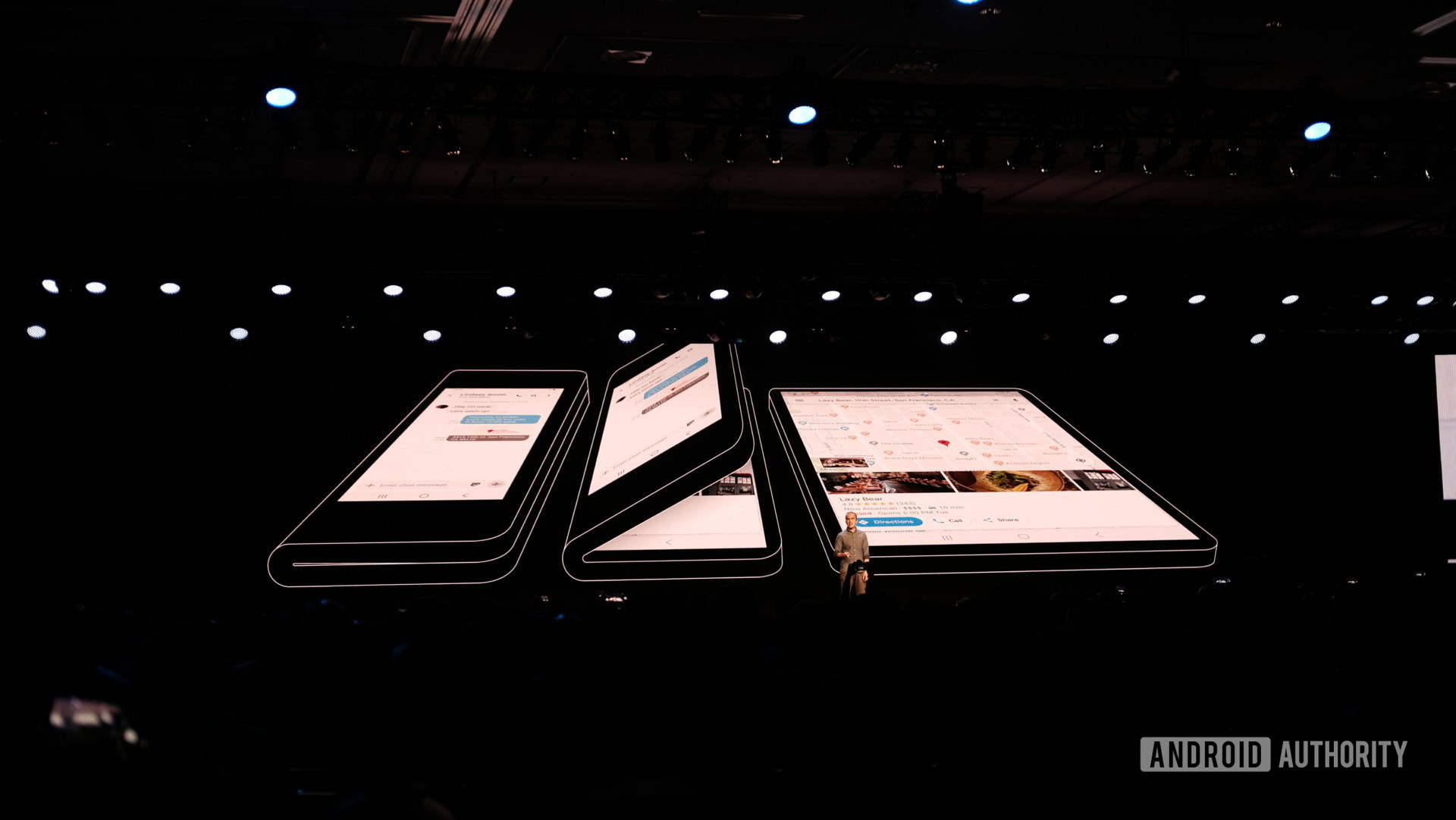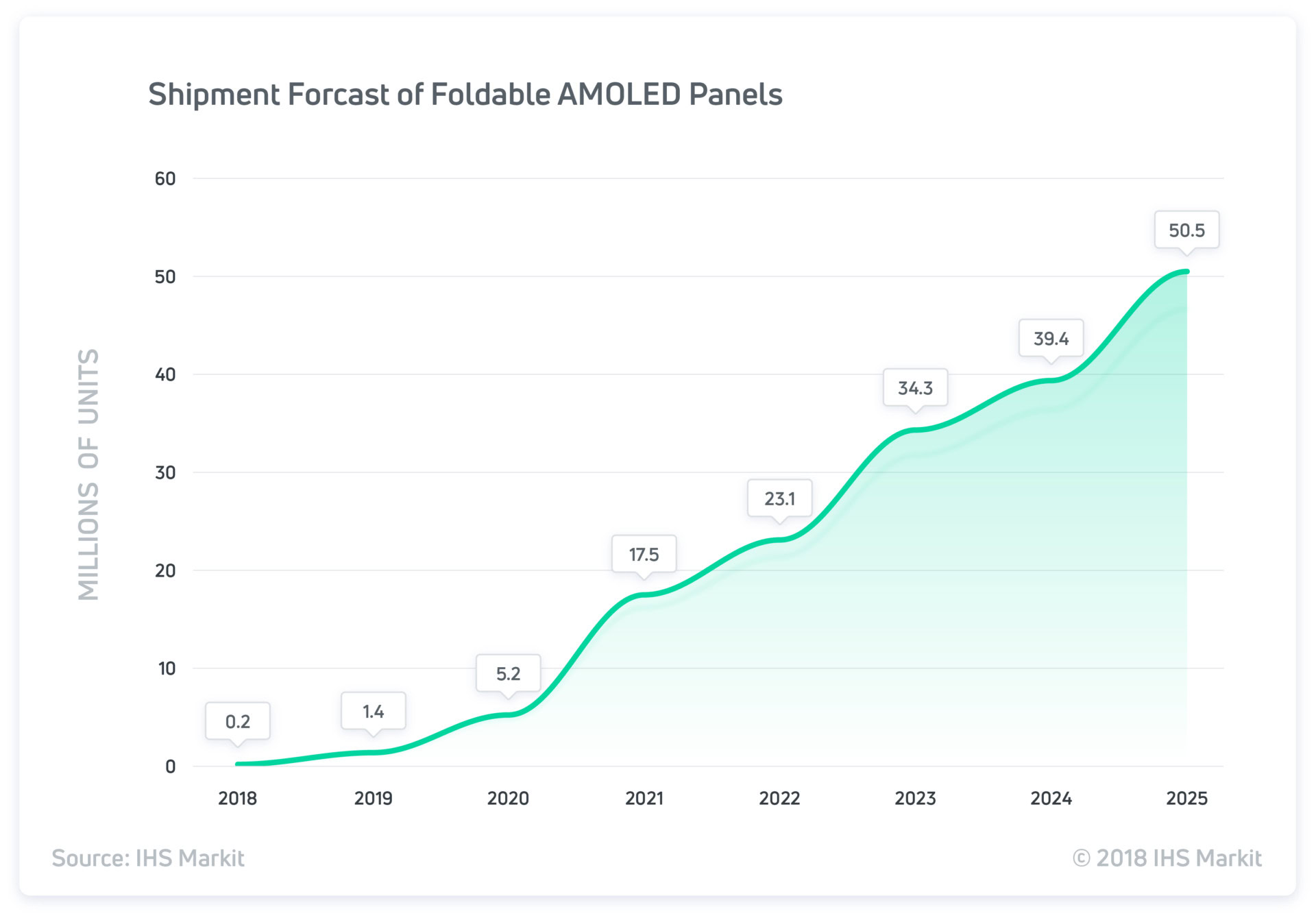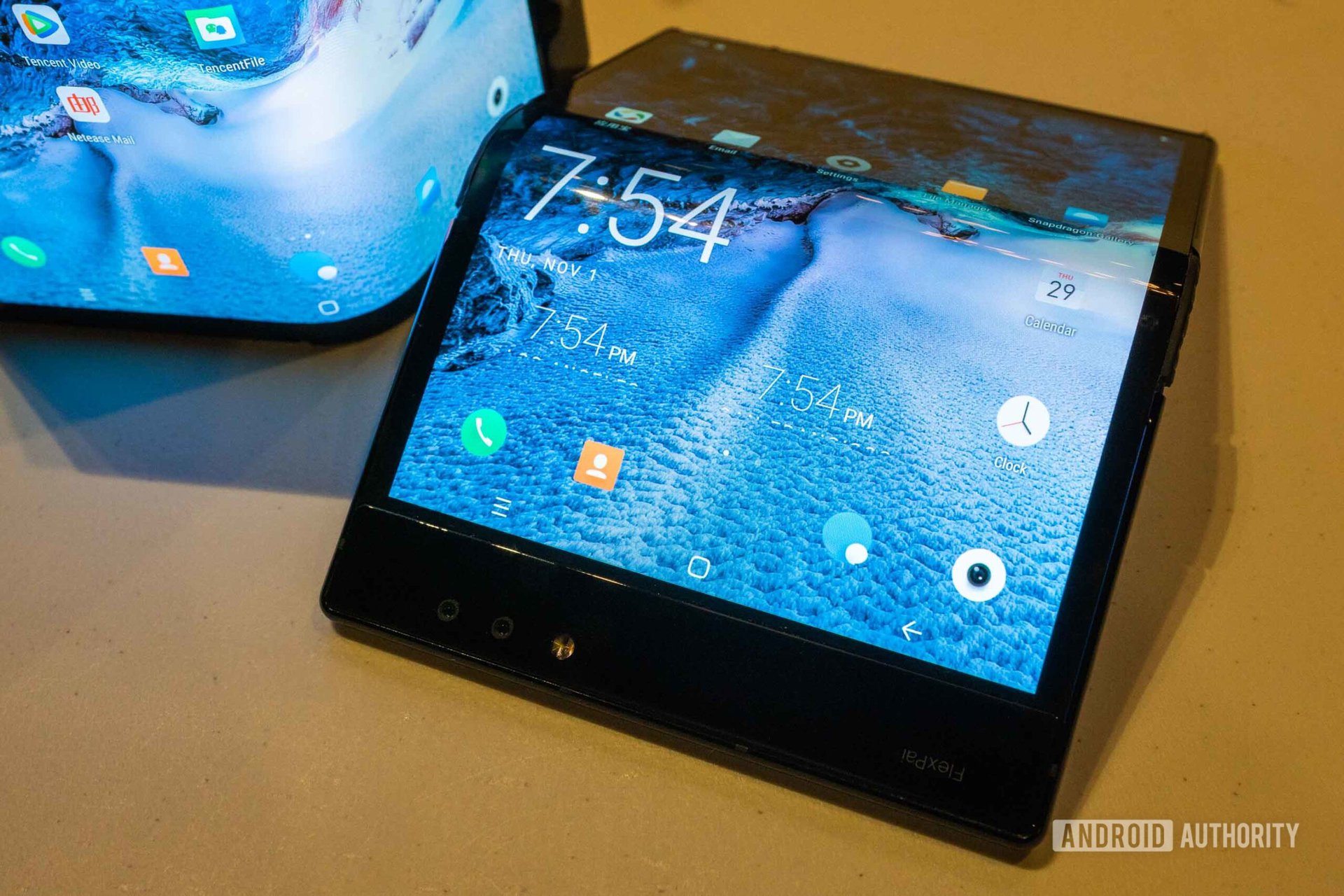Affiliate links on Android Authority may earn us a commission. Learn more.
Will you own one of the 50 million foldable-display smartphones by 2025?

Foldable displays are coming. They might be expensive today, tomorrow, and next year, but by 2025, industry experts are saying 50 million foldable active-matrix organic light-emitting diode (AMOLED) panels will be sold each year.
This foldable display data comes from IHS Markit, an industry and supplier tracker. Of course, in just the past few weeks we’ve seen Samsung show off their foldable phone and Royole bring a device to market as well. IHS isn’t saying that foldable displays are set to eat the world, but it will be a successful new technology rollout.

Initially, these devices will be expensive and only devoted tech enthusiasts will be buying them. Slowly, as prices come down and manufacturing yields improve, we’ll see demand pick up.
“Unit shipments of foldable AMOLED panels may not grow as fast for the first few years, but area per unit will be expected to be larger than that of conventional displays,” said Jerry Kang, senior principal analyst of display research at IHS Markit.
Foldable, not just flexible

To be clear, we’re seeing flexible displays in devices like Samsung Galaxy S9, and the iPhone X and XS range already, with both Samsung and Apple using the technology to offer smaller screen bezels inside the rigid glass. But IHS Markit is talking foldable displays, not just flexible displays. But it’s a matter of proving that the technology is up to the rough and tumble of everyday use.
The company warns that while suppliers want smartphone brands to commit to new offerings, durability and design limitations might still prevent wider uptake.
“Smartphone brands are cautious about launching foldable smartphones because the phones should be durable enough for repeated folding and thin and light enough even when supporting a larger display and battery,” said Kang.
How Samsung’s Galaxy Infinity Flex Display overcomes those hurdles will probably be one of the most interesting developments of 2019. Furthermore, as we saw at IFA 2018, we might get some devices that strap onto your wrist, which might work, or perhaps something we haven’t thought of at all.
In any case, Samsung looks to have finally lifted the lid on the foldable market after years and years of waiting. It looks like HUAWEI will follow suit, as will LG perhaps as early as January, OPPO will at least talk about a foldable device at MWC, and it seems most manufacturers are dabbling in the technology and will join in the fun — although I wouldn’t expect Apple to get into the business until it’s already established. Paying Samsung for their technology isn’t the only option either, with allegations that Chinese companies are allegedly stealing Samsung Display IP, thought to be foldable technology.
What took so long anyhow?
Flexible and foldable displays have been in existence for decades, but have faced numerous technical challenges in going from the lab to a consumer device.
Part of the problem has been in manufacturing the organic elements of the display efficiently. The fragile nature of organic LEDs has meant a higher percentage of defective displays with dead pixels while in the factory, meaning a low yield for manufacturers. As many as nine defective displays for every perfect display were being made as recently as 2012, forcing manufacturers to sell those working displays at a very high cost to cover the expense. Over time, processes have improved to the point where Samsung Display claimed a 90 percent yield rate on iPhone X screens — a massive improvement.
Samsung even gave up on OLED displays for televisions for these reasons, deciding to focus on quantum dot technology, leaving LG Display as the only player on large OLED panels. LG Display even sells its OLED screens to Sony for its Bravia TVs. This mastering of OLED technology over the years has allowed for bendable, flexible, and now foldable displays, but quantum dots may still be the future of display tech, as our own Bob Myers explains. But high-resolution small OLED screens is where foldable technology comes to play right now:
Foldables have been overdue for some time now. I argued that until recently, flexible screens have been a gorgeous waste, trapped inside rigid glass. Those days look like they’re over.
Foldable and flexible displays: What’s next?
So we already know the first crop of foldable phones hit the scenes in 2019, but what can we expect from foldables over the next few years? Obviously there’s no way to know for sure but we can tell you that foldable displays likely won’t be making their way into the main flagships from Samsung, HUAWEI, and others for at least a few years.
Huawei, Samsung, LG, and others will spend the early days refining their foldable phone designs to make them more appealing to the mainstream and will introduce these experiments arrive as new product lines, at least initially. Look no further than early flexible tech and we can see how this might unfold (pun unintended).
When flexible displays first arrived to the commercial market they arrived in less-than-polished formats, such as the Samsung Galaxy Round and LG G Flex. Then came slight improvements like the Note Edge, before Samsung got into its groove with the Samsung Galaxy S6 Edge. Nowadays flexible curved displays are pretty commonplace in flagships.
Can foldables become the new flagships? We’ll need at least a few generations before we’ll know for sure, as it will take time to work out the kinks in this new technology. But IHS is saying between 2020 and 2021 is the big jump in sales, from a few million units sold to beyond 17 million. If IHS is right, you’ll hear them say you heard it from them first.